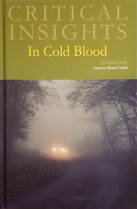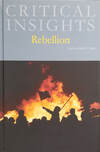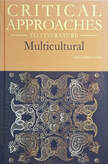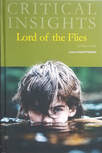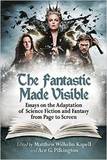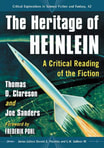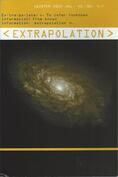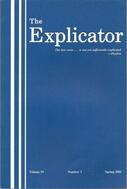Literary Criticism and Reviews: Robert A. Heinlein
|
Robert A. Heinlein remains one of my favorite authors. Unlike Ray Bradbury, who often may be read for an assignment in an English class, Heinlein might be somewhat lesser known to those not already familiar with science fiction. For myself, though, since the time that I first read Space Cadet at age 11 or 12, I have returned to Heinlein again and again.
I read the book pictured at right probably 8 times when I was a kid. Later I read most, if not all, of Heinlein’s “juvenile” novels of the 1940s and 1950s aloud to my children. I still revisit Heinlein for entertainment and enlightenment, and as a critic I have written about several topics that happened to have caught my attention. |
Below is a list of my Heinlein criticism. Quite a bit of it is available in the online literary research databases to which many school libraries subscribe, but I also have provided links to other full-text sources when possible.
|
“ ‘There Must Be Something Wrong with Us’ Versus ‘A Black Widow Spider Can’t Help It—But That’s the Point’: Right and Wrong and Responsibility in In Cold Blood and Robert A. Heinlein’s Have Space Suit—Will Travel.” Critical Insights: In Cold Blood, edited by Nicolas Tredell, Salem, 2020, pp. 135-50. |
|
“About This Volume.” pp. vii-xii.
“On Robert A. Heinlein.” pp. 3-17. “Mr. Koshchei Makes the Law: To Hell and Back in Robert A. Heinlein’s ‘Magic, Inc.’ and Job: A Comedy of Justice.” pp. 70-85. “ ‘Locked in Somewhere Safe’: Robert A. Heinlein and the Bomb Shelter.” pp. 183-98. “Chronology of Robert A. Heinlein’s Life.” pp. 245-50. “Works by Robert A. Heinlein.” pp. 251-56. “Bibliography.” pp. 257-61. “About The Editor.” p. 263. |
|
“From Selenite Suicide to Bonestell Backdrops: Robert A. Heinlein on the Course to Destination Moon.” The Fantastic Made Visible: Essays on the Adaptation of Science Fiction and Fantasy from Page to Screen, edited by Matthew Wilhelm Kapell and Ace G. Pilkington, McFarland, 2015, pp. 28-42. Cited in Conrad, Dean, and Lynn Magowan. “Female Scientists Under Strain: Transitions from Lab to Lit to Screen.” Lab Lit: Exploring Literary and Cultural Representations of Science, edited by Olka K. Pilkington and Ace G. Pilkington, Lexington, 2019, pp. 21-50. p. 45. |
|
“The Heritage of Heinlein: A Critical Reading of the Fiction” (review). SFRA Review vol. 309, Summer 2014, pp. 39-41. Available online here. |
|
“He ‘Just Plain Liked Guns’: Robert A. Heinlein and the ‘Older Orthodoxy’ of an Armed Citizenry.” Extrapolation vol. 45, Winter 2004, pp. 388-407. First page preview here. |
|
“ ‘Maybe the Hardest Job of All—Particularly When You Have No Talent for It’: Heinlein’s Fictional Parents, 1939-1987.” Extrapolation vol. 44, Summer 2003, pp. 169-200. Available online here and here. Listed in Gary Westfahl. Science Fiction Literature through History: An Encyclopedia. Westport, CT: Greenwood, 2021, p. 279. |
Letter. Extrapolation vol. 42, no. 4, Fall 2001, p. 385.
|
“From Free Love to the Free-Fire Zone: Heinlein’s Mars, 1939-1987.” Extrapolation vol. 42, Summer 2001, pp. 137-49. Available online here and here. Listed in Westfahl, Gary. The Stuff of Science Fiction: Hardware, Settings, Characters, McFarland, 2022, p. 249. Listed in Major Authors and Illustrators for Children and Young Adults, 2nd ed., Gale, 2002. |
|
“[Time in] Heinlein’s Have Space Suit—Will Travel.” The Explicator vol. 59, Spring 2001, pp. 144-47. Available online here. |
|
“ ‘Starry-Eyed Internationalists’ versus the Social Darwinists: Heinlein’s Transnational Governments.” Extrapolation vol. 40, Spring 1999, pp. 53-70. Available online here, here, and here. Cited in Kakela, Jari. “Managing and Manipulating History: Perpetual Urgency in Asimov and Heinlein.” Fafnir: Nordic Journal of Science Fiction and Fantasy Research vol. 1, no .2, 2014), pp. 7-22. URL: http://journal.finfar.org/articles/60.pdf. Listed in Westfahl, Gary, editor. The Greenwood Encyclopedia of Science Fiction and Fantasy: Themes, Works, and Wonders, vol. 1, Greenwood, 2005, p. 360. Listed in Major Authors and Illustrators for Children and Young Adults, 2nd ed., Gale, 2002. |
Listed in Benefiel, Candace R. “The Man Who Sold the Future: A Research Guide to the Fiction of Robert A. Heinlein.” Texas A&M Universities Library, 2001. URL: http://cushing.library.tamu.edu/collections/browse-major-collections/the-science-fiction-collection/the-man-who-sold-the-future-a-research-guide-to.html.
Listed in “Starship Troopers.” Wikipedia.org (“External Links”). URL: http://en.wikipedia.org/wiki/Starship_Troopers.
|
“Heinlein’s Inhabited Solar System, 1940-1952.” Science-Fiction Studies vol. 23, July 1996, pp. 245-52.
Rpt. in Short Story Criticism vol. 305, Gale, 2021. Rpt. in Short Story Criticism vol. 55, Gale, 2003, pp. 235-40. Rpt. in Children’s Literature Review vol. 75, edited by Rebecca A. Blanchard, Gale, 2002, pp. 71-76. Abstract available here. First page preview here. |
Cited in Bellamy, Brent Ryan. Remainders of the American Century: Post-Apocalyptic Novels in the Age of US Decline, Wesleyan UP, 2021, p. 137.
Listed in Benefiel, Candace R. “The Man Who Sold the Future: A Research Guide to the Fiction of Robert A. Heinlein.” Texas A&M Universities Library, 2001. URL: http://cushing.library.tamu.edu/collections/browse-major-collections/the-science-fiction-collection/the-man-who-sold-the-future-a-research-guide-to.html.
Listed in Benefiel, Candace R. “The Man Who Sold the Future: A Research Guide to the Fiction of Robert A. Heinlein.” Texas A&M Universities Library, 2001. URL: http://cushing.library.tamu.edu/collections/browse-major-collections/the-science-fiction-collection/the-man-who-sold-the-future-a-research-guide-to.html.


